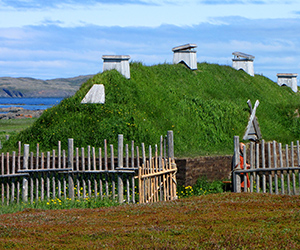CANADA HISTORY
Acadia

The Acadian settlement began in earnest in 1604 when Samuel de Champlain and Pierre Dugua, Sieur de Mons, established a settlement on St. Croix Island in the Bay of Fundy. The brutal winter of 1604-1605, marked by starvation and disease, nearly destroyed the fledgling community. In response, Champlain relocated the settlement to the more hospitable location of Port Royal (present-day Annapolis Royal, Nova Scotia), where Acadia's first permanent settlement was born. This marked the beginning of Acadian society, which grew to encompass much of the Maritime provinces and southeastern Quebec. Unlike the more heavily controlled settlements of New France along the St. Lawrence River, Acadia developed a unique and relatively autonomous culture.
The Acadians were primarily farmers, utilizing a sophisticated system of dikes to reclaim marshlands for agriculture. Their small, tight-knit communities spread throughout the fertile regions of the Maritimes. As the years passed, the Acadians began to feel increasingly distanced from France. Isolated from the political and economic centers of the French Empire, they forged their own cultural identity, with a strong emphasis on family, community, and peace. However, this peaceful existence would be tragically interrupted by the geopolitical conflicts between France and England.
Throughout the 17th and early 18th centuries, Acadia was a frequent battleground in the power struggles between the two European empires. Control of the region shifted back and forth between France and England multiple times, creating an atmosphere of uncertainty for the Acadian settlers. The Treaty of Utrecht in 1713 marked a decisive moment, as it ceded much of Acadia, including mainland Nova Scotia (but not Cape Breton Island), to the British. Although the Acadians were allowed to remain in their homeland, they were increasingly pressured by British authorities to swear an oath of allegiance to the British Crown.
The Acadians, however, were reluctant to take sides in the ongoing imperial conflicts. Their desire for neutrality stemmed from their fear that swearing loyalty to Britain could lead to conflict with the local Indigenous nations, many of whom were their allies, and with their French kin. Their refusal to swear an unconditional oath of allegiance became a point of tension, especially as British-French hostilities escalated in the lead-up to the Seven Years' War.
In 1755, the British authorities, fearing that the Acadians might side with the French in the ongoing conflict, took drastic action. Under the leadership of Governor Charles Lawrence, the British government ordered the expulsion of the Acadians—an event known as the Great Upheaval or Le Grand Dérangement. Approximately 6,000 Acadians were forcibly removed from their homes, their villages burned, and their lands confiscated. They were dispersed throughout the British colonies in New England, the Caribbean, France, and particularly Louisiana, where they became known as the Cajuns. The expulsion was a traumatic event that shattered Acadian society, separating families and scattering the Acadian people across the continent.
Henry Wadsworth Longfellow’s epic poem, "Evangeline: A Tale of Acadia," vividly captures the emotional depth of this tragedy. Through the story of Evangeline, a young Acadian woman separated from her lover during the expulsion, Longfellow immortalized the heartbreak and endurance of the Acadian people. His depiction of the “forest primeval” and the emotional longing of the displaced Acadians resonated deeply in both American and Canadian literature, and it brought the story of the Acadians into the broader consciousness of North America.
Although some Acadians managed to avoid expulsion by hiding in the forests of New Brunswick or fleeing to Quebec, many who returned after the British conquest of New France in 1763 found their lands occupied by British settlers. Despite this, the Acadian culture endured. Acadians who settled in Louisiana developed a distinct branch of their culture, the Cajuns, which thrived in the swamps and bayous of the American South. Those who remained in the Maritimes or returned later played a crucial role in shaping the cultural and linguistic identity of modern-day Nova Scotia, New Brunswick, and Prince Edward Island. Today, the Acadian influence remains a strong and vibrant part of the heritage of these provinces.
The expulsion of the Acadians and their eventual resettlement holds a critical place in Canadian history, particularly in understanding the complexities of colonial policies, the resilience of cultural identity, and the ways in which displacement and forced migration have shaped the social fabric of the country. The enduring legacy of the Acadians is seen in the strong sense of community and cultural pride that persists to this day in the Maritimes, where Acadian festivals, music, and language continue to celebrate their unique heritage. The Acadian Flag, adopted in 1884, symbolizes the enduring spirit of a people who, despite immense hardship, have maintained a strong connection to their ancestral roots and the land they once called home.
Cite Article : www.canadahistory.com/sections/documents




